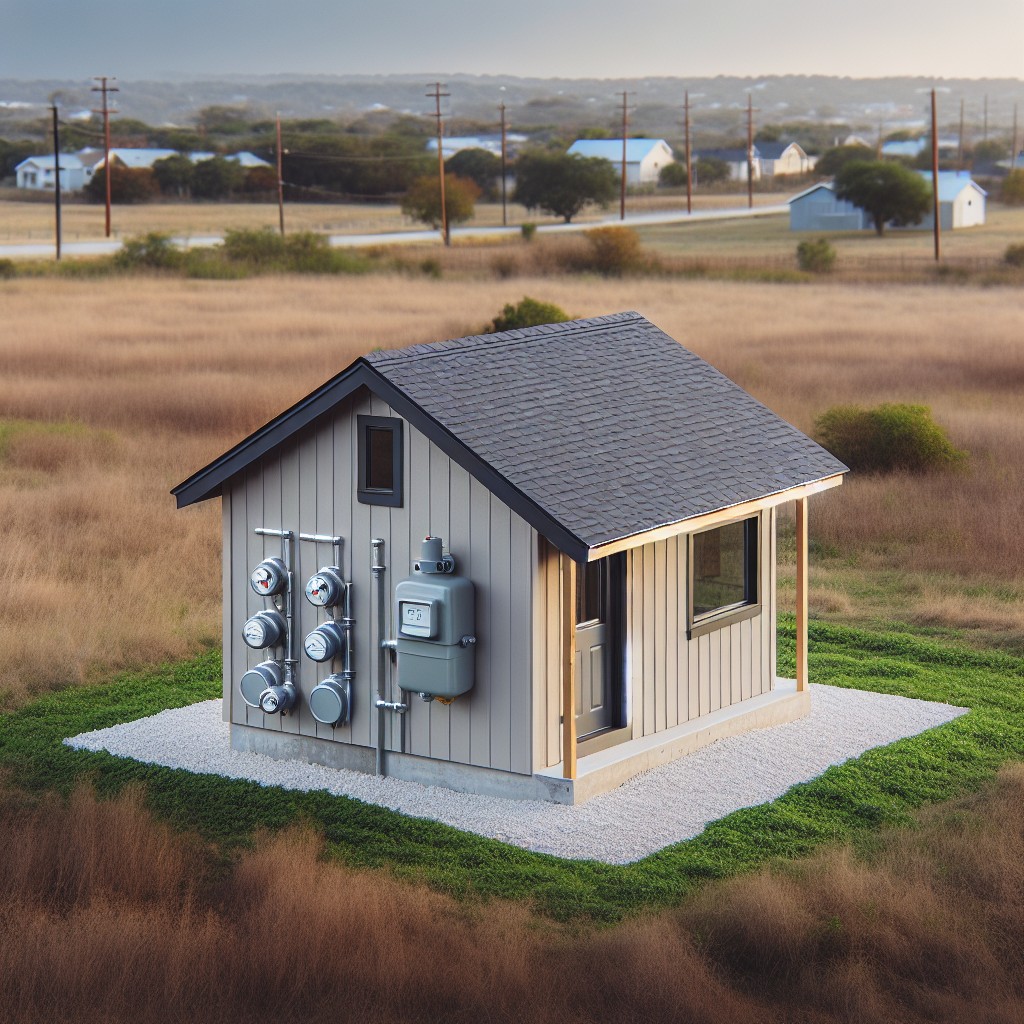Last updated on
Learn the steps to efficiently separate your ADU and main house utilities for clarity and cost savings.
Key takeaways:
- ADU utility needs determine shared or separate utilities.
- Research local regulations and building codes before proceeding.
- Consult with utility companies for installation specifics and requirements.
- Consider upfront costs and ongoing service charges for separate utilities.
- Separate utilities can increase property value and rental prices.
Assessing Your ADU’s Utility Needs

Before diving in headfirst, take a beat to consider what your ADU’s specific utility needs are. Think of it like figuring out what to pack for a weekend getaway – you wouldn’t bring skis to the beach, right? Well, your ADU shouldn’t have more (or less) utility than it needs.
Start by understanding the ADU’s purpose. Is it a cozy spot for the in-laws or a rental unit? The answer will guide what utilities are essential. For the former, sharing utilities with the main house might be okay, but for rental, not so much.
Next, calculate potential usage. If it’s going to be tenant-occupied, anticipate a full house’s worth of utility use. This insight will come in handy when you’re at the crossroads of deciding between shared or separate utilities.
Finally, think seasonally. An ADU often has different insulation and HVAC needs than the main house. In the thick of winter or the height of summer, these differences can make a significant impact on energy consumption and costs.
Assessing these points gives you the lay of the land, helping you make informed decisions down the line. Keep these tips in your pocket, and you’re already on your way to smart utility management for your ADU.
Evaluating Local Regulations and Building Codes
Before you dive wrench-first into splitting utilities, press pause and do a little homework on local legislation. Your city or county has rules that’ll either give you a green light or flash a stop sign for your project.
First off, check if your Accessory Dwelling Unit (ADU) is legally recognized as a separate entity. This distinction is crucial for setting up individual utilities. If it’s seen as part of the main house, you might hit a wall.
Then, sift through your area’s building codes. These are like recipes for construction and renovation; they’ll detail the nitty-gritty on electrical, plumbing, and gas lines work. Your ADU needs to comply with these instructions to the letter, or you might face penalties or, even worse, have to redo the work.
Lastly, tap into your utility companies’ policies. Some might welcome splitting meters with open arms; others, not so much. They could have requirements or restrictions that dictate how you proceed—everything from the kind of equipment to use to where it can be installed.
Keep in mind, while regulations can seem like a maze, they’re there for a reason. They protect you from safety hazards and potential legal headaches in future. Plus, adhering to them ensures your investment in the ADU pays off without any snags down the line. So, roll up your sleeves, and let’s make sure we play by the book!
The Process of Installing Separate Utility Meters
Embarking on the journey to install independent utility meters for your accessory dwelling unit (ADU) can be smooth sailing with the right map. First off, you’ll need to touch base with local utility companies. They can provide you with the specifics on how to go about the installation and the technical requirements involved.
Next up, prepare for some groundwork as you’ll likely need a permit from the city. This is standard stuff – just the city’s way of saying, “Let’s make sure everything’s up to snuff.” With that permit in hand, a certified professional can start the installation. This step is crucial – expert hands make light work of complex wiring and piping.
Also, remember that each utility (water, electricity, gas) might play by different rules, so installations may have varied timelines and blueprints. Electric and gas meters, for instance, should be easily accessible for reading and maintenance. Meanwhile, water meters may require some additional considerations regarding location and insulation, especially in chilly climates where Jack Frost likes to nip at pipes.
And a friendly heads-up – your main house might need a bit of tweaking to accommodate these new installations. But think of it as an investment; once your meters are ticking away separately, billing becomes a breeze, and you can wave goodbye to the days of puzzling over utility splits with your ADU tenants.
Estimating the Costs Associated With Separate Utilities
When it comes to splitting utilities, the price tag is a factor you can’t ignore. First off, brace yourself for the upfront costs. You’re looking at installation fees for new lines and meters, which varies like the weather depending on your location and service provider. Consult with local utility companies and get multiple quotes – this is no time for a one-and-done approach.
Also, consider the type of utilities. Water and power are pretty standard, but what about gas? Are you heating up the place or cooking with electricity? This choice might turn the financial tide in your project.
There’s also the ongoing saga of service charges. Sure, you might be reveling in the joy of two separate bills, but remember, each one comes with its own set of base fees, potentially doubling the pesky monthly charges you once had.
Don’t sleep on the paperwork either. You might need to grease the wheels with some permits or inspections, which means more green leaving your pocket.
The bottom line: budget with a little wiggle room. It pays to expect the unexpected rather than get knocked sideways by hidden expenses. Keep your wallet prepared, and the transition to split utilities should be smooth sailing.
How Separate Utilities Impact Property Value
Splitting utilities between your primary residence and an ADU can sweeten the pot for potential buyers or renters. When utilities are separately metered, tenants know they’re accountable for their consumption, which can lead to a more harmonious landlord-tenant relationship. For owners, there is clarity in billing, and no need to divide up costs manually, which can be a headache.
On the flip side, separate utilities can increase a property’s allure by offering autonomy to those living in the ADU—a big plus for those valuing independence. This feature often translates to higher rental prices as tenants are willing to pay a premium for this convenience.
Moreover, should you decide to sell, a property with independently metered ADUs can command a higher market price. This configuration is viewed as an investment perk, signaling lower administrative burdens and individual responsibility to prospective buyers. It’s akin to knocking on wood: It feels solid and reassuring.
Keep in mind, though, the initial outlay for setting up independent utilities may be significant. But weigh this against the potential for increased revenue and property value, and you might find the investment pays dividends in the long run. Think of it as planting an orchard; it takes time and effort to establish, but eventually, you’ll be making pies aplenty.
Related reading:
Table of Contents





